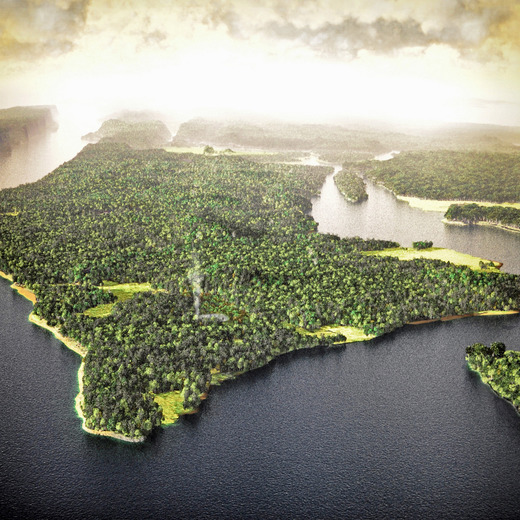On her web site,
Innovative Interactivity, Tracy Boyer reviews recent graphics, profiles big names in multimedia, and provides resources for people who, like myself, are just getting started in the field. Last week, she agreed to answer some of my questions about her project.
How did you get started with visual journalism?
Looking back, I realize now that I actually got into multimedia back in high school when I was a part of a morning broadcast news program my sophomore year. I also created a bilingual documentary for my senior project teaching Hispanics how to do important tasks like get a driver's license, buy gas, etc. In college I tested out several majors, including astronomy and public relations before finally landing in multimedia after taking an "Intro to Flash" course with Laura Ruel. I fully credit Laura and that course for making me fall in love with the potential of visual journalism and interactive technology.
How did Innovative Interactivity get started?
I started blogging after attending the Poynter Summer Fellowship in 2007 where we were encouraged to get more involved in blogging and social media. At the time I was only on Facebook, and I thought it was impossible to find the time to bookmark the sites I visited on del.icio.us, write frequent blog posts, tweet interesting thoughts on Twitter, post my photos to Flickr, etc. I remember being so overwhelmed that I started doing baby steps, first learning del.icios, then blogging on Blogger (with the clever blog title of "Tracy Boyer's blog"!), then tweeting. I'm still not using Flickr, Digg, StumbleUpon, and others, so you can see that I still have some baby steps to go!
What do you find is your most popular type of post?
It's really interesting to look at the analytics behind each post, because many times the posts that don't take as much time and thought are the ones that are the most popular. Anything with a number (10 must-see projects, 100 multimedia professionals...) always make a big ripple. Listing resources for different topics like my recent one with information visualization also seem to catch the attention of a lot of readers.
I love your tagline, "a digital watering hole for multimedia enthusiasts." How have you tried to nurture a community of readers?
Thanks! Honestly, I thought of that tagline while running one day because I wanted this site to be more of a collaborative forum than me preaching opinions. However, unfortunately the majority of time it's just me talking with little to no feedback. I know that people are reading because they are very gracious on a general level, but it normally takes a lot for people to actively comment on particular posts. One day a commenter made a great remark, but then e-mailed me quickly thereafter asking me to remove her comment when she realized that it was "featured" on the homepage in the list of recent comments. I wish I could have more of a discussion with my readers, and I will continually work towards that goal by asking more questions in my posts and bringing up controversial topics. But it's extremely hard to build an audience, so I'm proud of the community that II has built thus far.
Have you considered adding forums or other community attributes to the site, to foster the "watering hole" aspect?
I have seen several Ning sites in action with similar topics to that of II, and they always seem to dwindle. I'd rather not provide a forum that nobody uses, and instead wait until the community is large enough where I could anticipate good traffic to those types of components.
Do you do any promotion of your site, subtle or otherwise, on other multimedia journalism sites?
I do actively engage in dialogue with other bloggers, as well as promote II through word-of-mouth, talks, etc. It is a very delicate balance though between getting the word out about II and being obnoxious about it. I'm sure you will experience the same in promoting your blog!
Is Adobe Flash the only advertiser on your site? How did you get set up with them?
I use Commission Junction for my advertising purposes, which lets me pick my own advertisers. I currently have all Adobe ads, but I have used others in the past, including GoDaddy. I personally hate ads, so I try my best to make the ads relevant to the content on the site. Then I use Google ads on my RSS feeds.
Is advertising your only source of revenue, or do you have other methods of financing the site?
You have to build a significant audience before you can get direct sponsors which brings in the real money. I make maybe $10 a month from my advertisements. Right now blogging isn't about making money, but rather building the community and audience so hopefully one day I can turn a profit. I always tell people that II has been (and is) a labor of love.
What other projects are you involved with, besides Innovative Interactivity?
Each weekday morning I work on a news aggregation Web site called i360Gov. I am also part of UNC's News 21 project, where we are producing multimedia stories about energy issues for the site PoweringaNation.org. Then I have my master's thesis going on where I am researching the differences in short-tern retention rates and user satisfaction levels between passive and interactive multimedia.
What have you learned about the data visualization community from running this site?
I would say my audience is more interested in all forms of multimedia storytelling, with data visualization and graphics being one subset. It has been amazing to note the people I have "met" through blogging, and it is inspiring to hear their passionate ramblings about our field.












